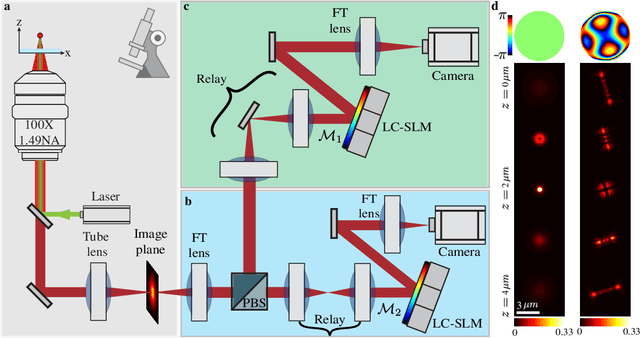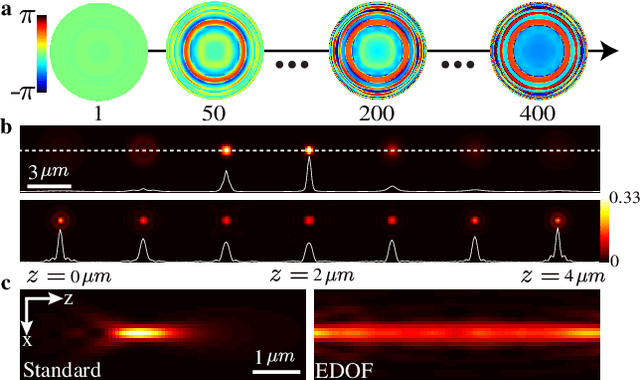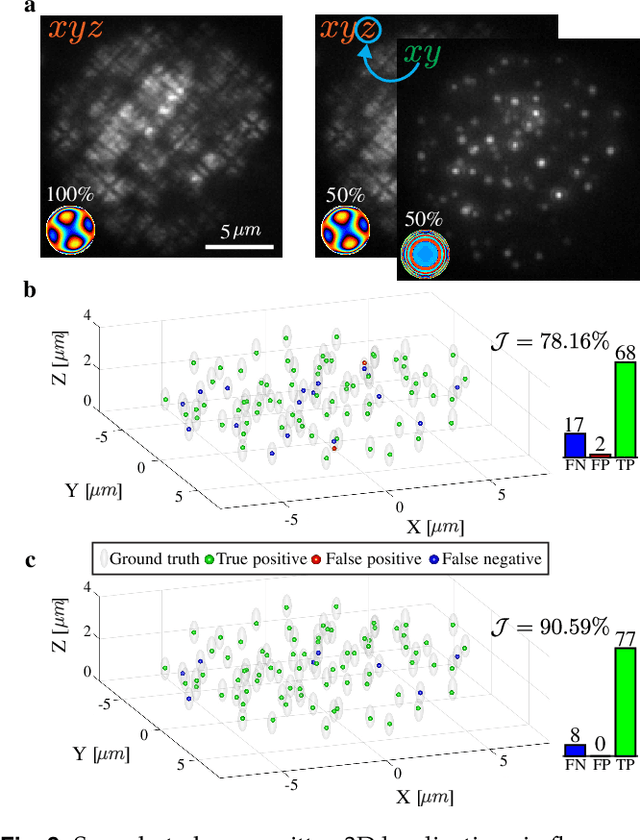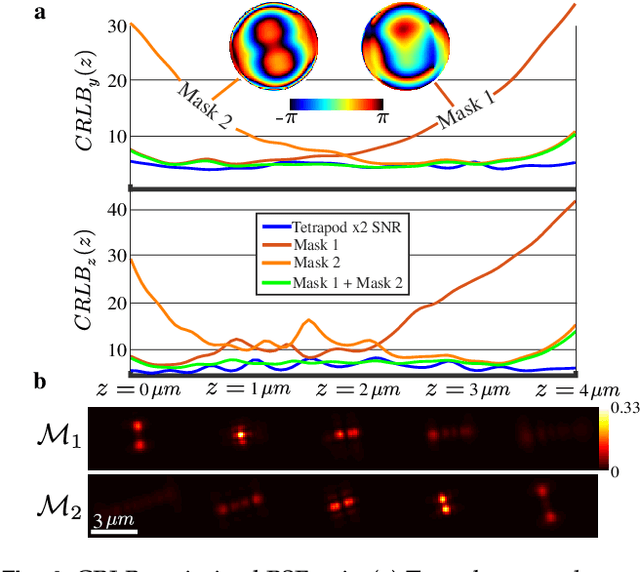Learning an optimal PSF-pair for ultra-dense 3D localization microscopy
Paper and Code
Sep 29, 2020



A long-standing challenge in multiple-particle-tracking is the accurate and precise 3D localization of individual particles at close proximity. One established approach for snapshot 3D imaging is point-spread-function (PSF) engineering, in which the PSF is modified to encode the axial information. However, engineered PSFs are challenging to localize at high densities due to lateral PSF overlaps. Here we suggest using multiple PSFs simultaneously to help overcome this challenge, and investigate the problem of engineering multiple PSFs for dense 3D localization. We implement our approach using a bifurcated optical system that modifies two separate PSFs, and design the PSFs using three different approaches including end-to-end learning. We demonstrate our approach experimentally by volumetric imaging of fluorescently labelled telomeres in cells.
 Add to Chrome
Add to Chrome Add to Firefox
Add to Firefox Add to Edge
Add to Edge